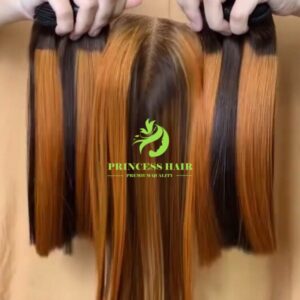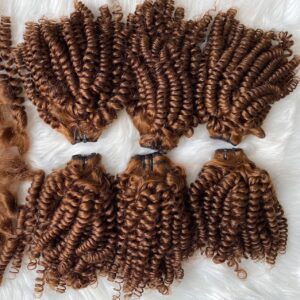HAIR BLOG
THE DIFFERENCE BETWEEN HUMAN HAIR AND SYNTHETIC HAIR
I. The difference between Human Hair and Synthetic Hair
| Parameters of Comparison | Human Hair | Synthetic Hair |
  |
||
| Material | Made from 100% real human hair | Made of good quality plastic, usually polyester, acrylic, or polyvinyl |
| Feature | – Solf, silky, less prone to tangling. – Being dived into water or getting wet, they are still silky, smooth, no tangle and no shedding.
– Can be bleached, colored, textured, styled, and treated as you can with your natural hair. |
– It is dry and tangled that you can’t gently brush them from roots to tips.
– Tangled and rough at the tip hair – Hold up in all climates with no frizzling – Many styles available – Little to no maintaintenance |
| Quality |
Offers the most natural look and feel. Considered a premium choice.
|
Made from fibers so non-resistant to heat => Difficult to style (flattening, curling) by straighteners and curling irons and cannot be dyed. Especially, after you has styled for synthetic hair, they are often dry and brittle.
|
| Endurability
|
Human hair can be used for years
|
Only lasts about 3 months ( short lifespans)
|
| In term of easy care
|
Human hair also needs to be washed, massaged and styled regularly. | They require no careful care.
|
| Price | Costlier than synthetic hair and usually are used for hair extensions | Cheap and are used for hair wigs |
| How to distinguish
|
Test by water:
Human hair will retain its watery appearance or curl even when wet Test by burning: when it burns very little smoke and has a characteristic burning smell.
|
Test by water:
Synthetic wigs, when wet, will feel heavier and will not retain their shape Test by burning: Cut a small piece of hair you buy and burn it directly over a small flame. If the hair is flammable, creating a large flame, and smells of tar, this is a synthetic hair
|

